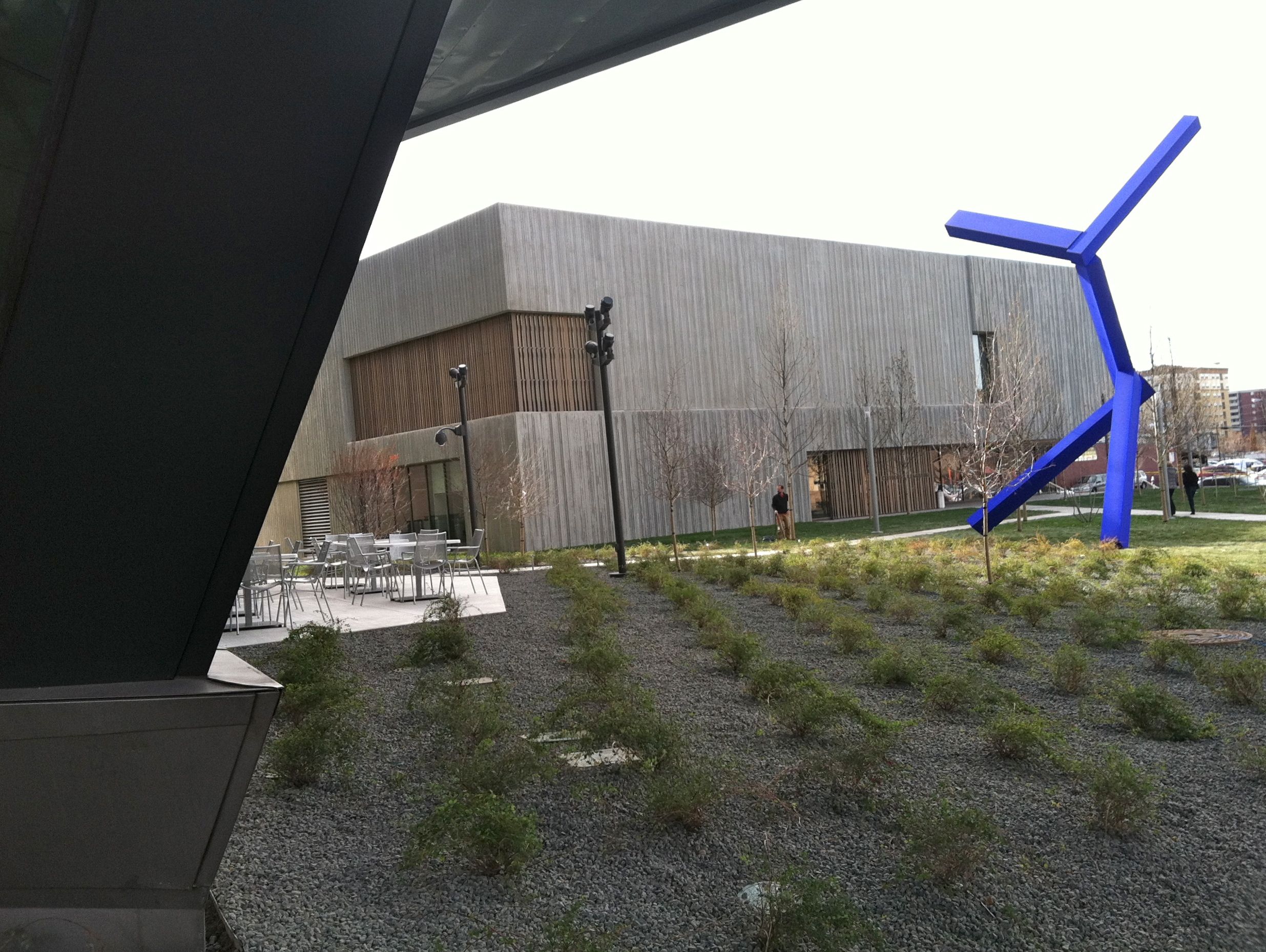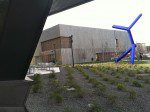
25 Nov CLYFFORD STILL MUSEUM OPEN IN DENVER
Clyfford Still Museum quietly shouts for joy, provides counterpoint to Denver Art Museum.
 A paean to the artist, Denver’s brand spanking new Clyfford Still Museum is also a monument to the glory days of America, which emerged Phoenix-like from the ashes of World War II as a superpower. At exactly the same time, around 1945, the center of the art world shifted from Paris to New York and the cerebral dream world of Surrealism yielded to powerful, visceral, physical impulses of Abstract Expressionism, the first truly all-American art form, celebrating as it does bold action and rugged individualism.
A paean to the artist, Denver’s brand spanking new Clyfford Still Museum is also a monument to the glory days of America, which emerged Phoenix-like from the ashes of World War II as a superpower. At exactly the same time, around 1945, the center of the art world shifted from Paris to New York and the cerebral dream world of Surrealism yielded to powerful, visceral, physical impulses of Abstract Expressionism, the first truly all-American art form, celebrating as it does bold action and rugged individualism.
Abstract Expressionist painters, many of whom began by tipping their brushes to the Surrealists, valued the spiritual and archetypal as sources of inspiration, including the “field” painters (as opposed to “gestural” painters like Jackson “The Dripper” Pollack): Mark Rothko, Barnett Newman, and Clyfford Still. Still and his fellow “field workers” appeared to be revisiting ideas first explored in the 19th century by the Big Sky boys, painters such as Bierstadt and Church, whose western landscapes honored Mother Nature as God’s playground, majestic, aloof and incorruptable. Such landscapes were familiar turf for Still, who was born in North Dakota (in 1904), but spent the first 40 years of his life on the prairies of eastern Washington state and southern Canada.

Museum notes maintain Still claimed the figure was a persistent presence in all his work and clearly that is one way to interpret the vertical form that cuts through his mature canvases of the 1940s and 1950s like a flame. Prana, the life force, surging upward through primordial muck? Our transcendent Self? Makes sense when we look at Still’s artistic evolution: the spirit of bowed farmers from his earliest work, liberated from its shackles, suddenly soars. At the same time it seems impossible not to see those monumental canvasses with rugged cliff-like forms emerging from backdrop of paint as thick and crusty as primordial mud as landscapes shot through by a jagged lightening bolt and echoing the forbidding thunder of tectonic plates coming together and drifting apart.
 The Clyfford Still Museum opened for business on November 18, 2011, with the idea of reintroducing the life and work of one of America’s most significant artists. Denver’s newest museum houses 94% of Still’s total creative output, allowing the public to explore the full trajectory of the artist’s 60-year career for the very first time. The top-drawer collection featuring about 110 works on display includes the artist’s rarely seen figurative images from the 1920s and 1930s, his signature Abstract Expressionist pieces from the 1940s and 1950s, and paintings from the 1960s and 1970s created after Still’s wholesale retreat from the urban art world, plus 100s of works on paper created almost daily throughout the artist’s life. (These unknown works on paper are among the most memorable in the current exhibition.)
The Clyfford Still Museum opened for business on November 18, 2011, with the idea of reintroducing the life and work of one of America’s most significant artists. Denver’s newest museum houses 94% of Still’s total creative output, allowing the public to explore the full trajectory of the artist’s 60-year career for the very first time. The top-drawer collection featuring about 110 works on display includes the artist’s rarely seen figurative images from the 1920s and 1930s, his signature Abstract Expressionist pieces from the 1940s and 1950s, and paintings from the 1960s and 1970s created after Still’s wholesale retreat from the urban art world, plus 100s of works on paper created almost daily throughout the artist’s life. (These unknown works on paper are among the most memorable in the current exhibition.)
The museum’s total collection of about 2,400 images form the basis of what will be rotating exhibitions mounted throughout nine sunlit exhibition spaces.
When Still died in 1980s, his estate was sealed off from public and scholarly view. His will stipulated that it would be given in its entirety to an American city willing to establish permanent quarters dedicated solely to his work. In August 2004 the City of Denver, under the leadership of then Mayor Hickenlooper, was selected by Still’s sole heir, his wife Patricia.
Brad Cloepfil and Allied Works Architecture designed the two-story, 28,500-square-foot Clyfford Still Museum, the newest addition to Denver’s burgeoning Cultural Arts District, seamlessly located adjacent to the Denver Art Museum in the city’s Civic Center Cultural Complex. In addition to the galleries on the second floor, educational facilities, a library, archives, collection storage, a conservation laboratory, and administrative offices populate the first floor. Conceived as a solid mass of concrete, crushed granite and quartz, the Brutalist structure itself, opened up as it is to natural light, becomes the primary source of light for Still’s work. The structure, which continually collapses into itself, coaxes us inevitably into a welcomed intimacy with the work. Hats off to Cloepfil and Allied Works for creating a quietly elegant structure with solid legs as a counterpoint to the soaring Baroque angles and curves of the neighboring titanium and glass fantasy created by Daniel Libeskind and Denver Partnership Architects. The Clyfford Still Museum contains all the action within its stolid walls.


Lisa Dawn Gold
Posted at 22:10h, 21 DecemberIf you were never a Still fan, the work housed in the new Denver museum will change your mind. And the building is a gem too!